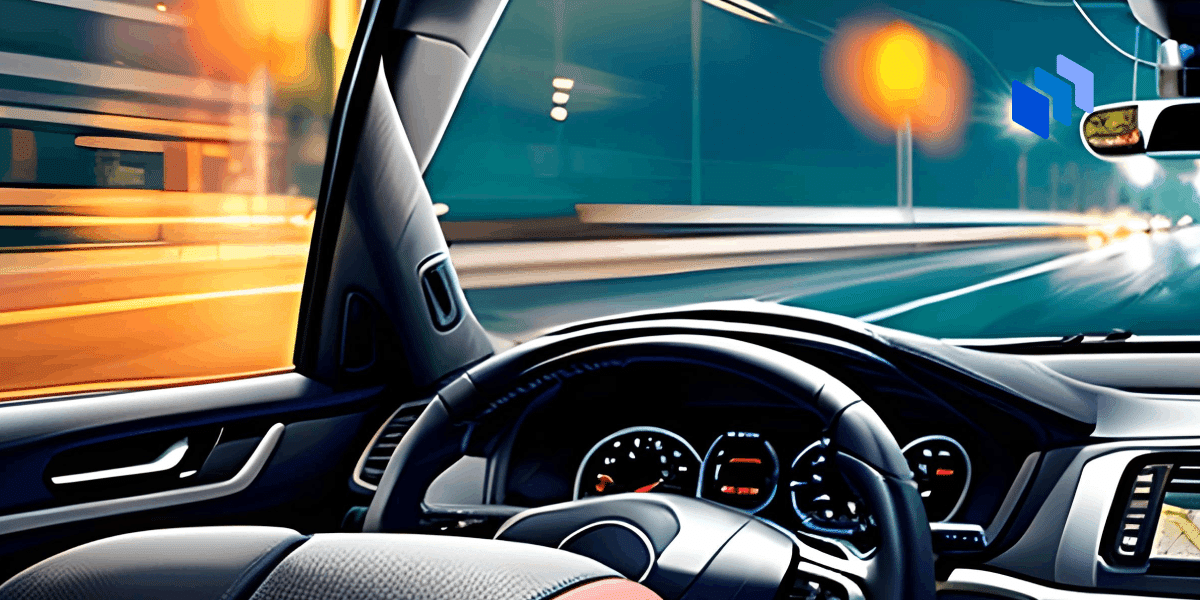The idea of cars being able to drive themselves while passengers could safely stretch their arms and relax is nearly as old as cars themselves.
And it’s surprising how its modern practical application isn’t so far from the future envisioned back in the 1950s by General Motors (although with less singing than GM envisioned back then).
Still, we have not reached the inflection point where driverless cars can be seamlessly adopted as a mainstream technology.
Since the first practical talks of autonomous cars during the last decade, things have gone back and forth quite a bit. We thought they couldn’t be hacked, only to find out that hacking them was a serious issue, and even now, their safety is still a bit sketchy.
Manufacturers such as Honda and Mercedes have managed to achieve SAE level 3 (‘conditional automation’) with their driverless vehicles, while others like Tesla, General Motors, and Ford are closely catching up in the chase.
But how far are we from that moment in time when we can start thinking about a family car that doesn’t need a human pilot? Whether we’re talking about a couple more years or a decade or two is hard to determine.
Let’s try shedding some light on the matter by having a look at the current state of adoption of this technology, including the roadblocks (pun intended) that are currently preventing it from reaching widespread adoption.
Autonomous Vehicles Are Already Mainstream – To A Degree
The industry standard in driverless cars accepted six different levels of autonomy described by SAE International. They range from 0 (traditional, fully human-operated cars) to 5 (essentially sci-fi vehicles that don’t need acceleration or brake pedals — they can even include hypothetical vehicles without wheels).
However, it is surprising to understand how common some of the most advanced level 2 features are. For example, Adaptive cruise control (ACC) and ‘lane keep’ assistance systems (LKAS) have already become standard features of all new cars, with 91% and 86% (respectively) of cars sold today having these systems installed.
Full level 2 vehicles account for 41% of new car sales, meaning we’re ushering in a new era of partially autonomous vehicles that, while not driverless yet, can automatically adjust their speed or trajectory to keep us safe. And this has happened under our eyes in a very short time frame, with the number of level 2 vehicles doubling in just three years.
However, there are still some roadblocks that prevent this technology from reaching the genuinely futuristic level 4 and 5.
Hitting The First Roadblock: Safety (or Lack Thereof)
A quick search about accidents and crashes that involved driverless vehicles in 2023 will bring several results.
From driving on the wrong side of the road to driving themselves into construction sites, autonomous cars seem to still be a little… untrustworthy when facing unexpected circumstances.
Most of these accidents are hardly serious or even fatal, but they proved to be severe (and frequent) enough to force General Motors to cut their Cruise fleet of robo-taxis in San Francisco by 50% after repeated collisions.
What’s debatable, however, is how much of these accidents are truly the fault of driverless cars.
After all, we’re installing autonomous driver-assistance systems into new cars to improve road safety, aren’t we?
According to Gitnux, accidents per million miles driven for Waymo self-driving cars are 0.59, compared to the general U.S. rate across all cars of 2.98, and it is speculated widespread adoption of autonomous vehicles can cut accidents by 90%.
But while it is biased to cherry-pick the odd accident caused (or involving) a self-driving car to portray it as unsafe, it is arguably as much of an exaggeration to take this 90% at face value.
To truly ensure safety on the road, you might argue, all vehicles should be autonomous since only then would we be sure that they would all adhere to road rules with a machine’s strictness rather than with a human’s liberty.
In other words, the more we adopt driverless cars, the more they can become safer and, in turn, more accessible to adopt. Like many other disruptive technologies, its expansion will be exponential rather than linear – we are not yet at the point where the adoption curve starts rising up vertically.
Emergency Vehicles: The Nemesis Of Driverless Cars
And this brings us to the next point: the leading cause of accidents, collisions, and mishaps is, by far, the inability of driverless vehicles to react to the unpredictability of human behavior. A few weeks ago, the San Francisco police and fire departments raised a red flag on the California Public Utilities Commission’s decision to allow self-driving car companies to expand their programs.
According to emergency responders, autonomous vehicles tend to behave erratically and unreliably when dealing with fire trucks, ambulances, or other emergency vehicles.
Driverless cars still struggle to figure out the inherent unpredictability and need to violate road rules to allow passage or mobility in emergencies. How much of this is going to be a burden?
If you want to see the practical effect of this — watch as a driverless car silently rolls up to firefights as they’re rolling out the hose for a massive residential fire.
Trusting Driverless Cars Doesn’t Depend On Just Their Safety
While the issue with emergency vehicles may seem minor and could be solved by improving some algorithms, it actually hides a severe issue.
Our lack of trust in vehicles that do not allow the driver to control them is a major psychological block that prevents us from accepting them. More than two-thirds of drivers (68%) would be afraid to ride a self-driving vehicle, in what you might call “going the wrong way”; this percentage has risen in the last year.
It means that people feel less and less safe, even if smart cars are actually getting better and safer over time.
A critical step to achieving adoption is not just ensuring these cars can perfectly handle themselves on the road. It’s finding a way to establish a good, possibly human-like relationship with the drivers to gain public trust.
Drivers must have a clear understanding of the system the rules that govern autonomous driving (as well as their degree of legal responsibility in case of accidents), and feel able to control and override the systems if something goes awry.
The Bottom Line
We’re probably not yet ready to board a talking, intelligent rocket-like car while singing with our family in a 1950s fashion.
Yet, if we look at where we were just five years ago and where we are now, our journey towards fully automated driving has made a giant leap forward.
How long we have before we can really talk about steering wheels as an obsolete piece of our past is hard to say, but it will probably happen much sooner than most of us could expect.






